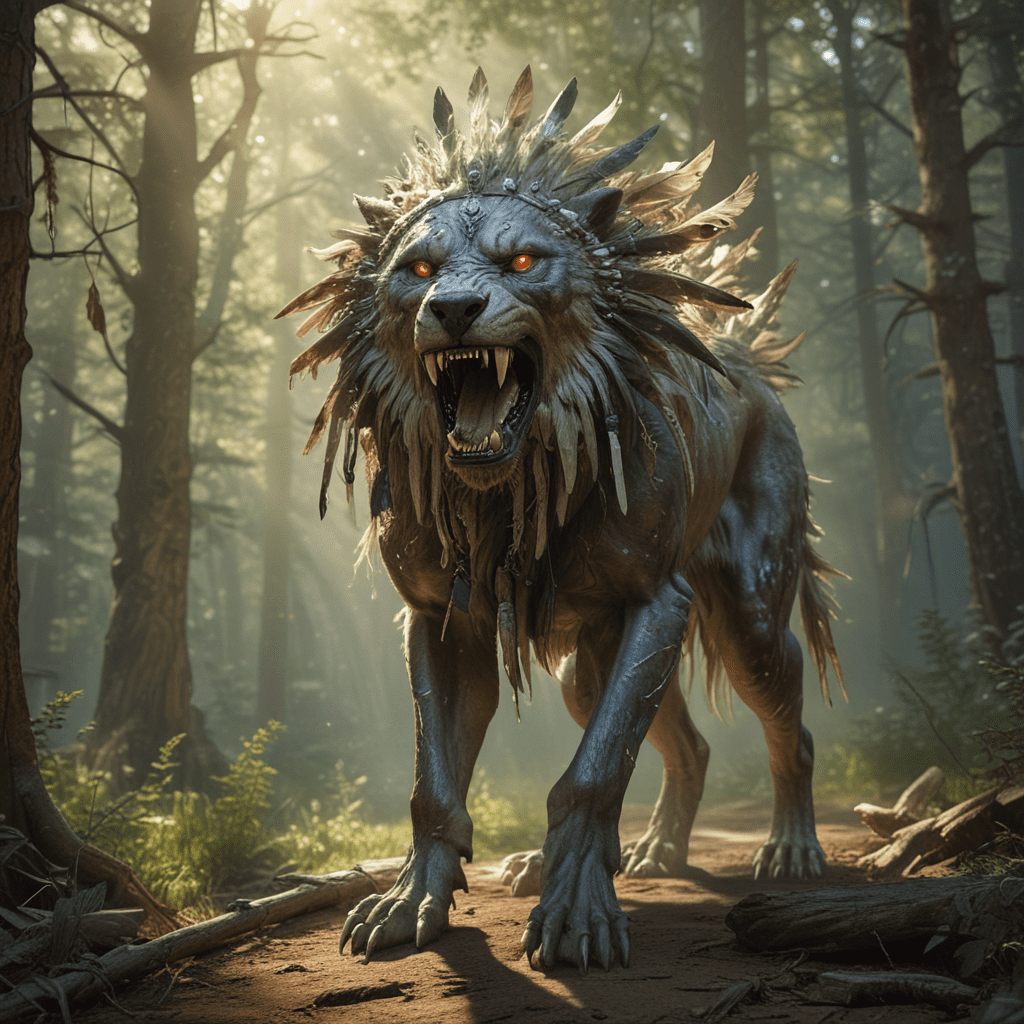The Tales of Transformation in Persian Mythology
1. Introduction:
Persian mythology, a tapestry of fantastical tales and epic poems, is deeply intertwined with the concept of transformation. This ancient lore transcends mere entertainment, serving as a mirror reflecting the human condition, its aspirations, and its anxieties. Through its myriad narratives of shapeshifting heroes, divine interventions, and societal upheavals, Persian mythology explores the transformative power inherent in existence itself.
2. The Many Faces of Transformation:
Transformation in Persian mythology manifests in diverse forms, each carrying its own profound meaning. Physical transformations, such as shapeshifting and metamorphosis, often serve as metaphors for internal change, mirroring the evolution of a character's personality or destiny. Zal, the mythical hero, undergoes a dramatic physical transformation, born with white hair and abandoned, only to be raised by the mythical bird Simorgh,象征着个人成长的力量以及克服逆境的能力。
Psychological transformations, encompassing character development and enlightenment, are equally prevalent. In the epic poem Shahnameh, the tragic hero Rostam grapples with the consequences of his actions, his journey reflecting the transformative potential of self-reflection and the pursuit of wisdom. His story highlights the transformative power of self-reflection, demonstrating the ability to learn from mistakes and evolve into a better version of oneself.
Societal transformations, encompassing revolutions, cultural shifts, and the rise and fall of dynasties, form another crucial aspect of Persian mythology. The Shahnameh chronicles the turbulent history of Persia, showcasing the transformative power of collective action, the cyclical nature of history, and the enduring human struggle for progress. These societal transformations emphasize the interconnectedness of individuals within a larger social fabric, underscoring the collective responsibility in shaping the destiny of a nation.
3. The Power of Transformation:
Transformations in Persian mythology play a pivotal role in shaping narratives and enriching characters. They serve as catalysts for growth, posing challenges that force characters to confront their flaws, embrace their potential, and ultimately transcend their limitations. These transformations contribute to the exploration of universal themes, including morality, fate, and free will.
4. The Hero's Journey:
The motif of transformation occupies a central place within the hero's journey, a narrative archetype found across cultures. Transformations serve as trials and tests, shaping the hero's identity and propelling them towards their ultimate destiny. In the story of Rostam and Sohrab, a tragic misunderstanding leads to a devastating battle between father and son, a transformative experience that reveals the devastating consequences of pride and the enduring power of familial bonds.
5. Notable Transformations:
Persian mythology abounds with captivating tales of transformation, each offering profound insights into the human experience. Among the most renowned are:
Rostam and Sohrab: This epic poem narrates the tragic tale of a father and son who unknowingly clash on the battlefield, their true identities revealed only in the aftermath of a fatal duel. The story exemplifies the transformative power of fate, the devastating consequences of miscommunication, and the enduring power of familial bonds.
Zal and Simorgh: This mythical narrative recounts the story of Zal, a newborn abandoned due to his unusual appearance, who is rescued and raised by the benevolent Simorgh, a mythical bird. His transformation from an outcast to a revered hero embodies the transformative power of compassion, mentorship, and the triumph over adversity.
The Shahnameh: This monumental epic poem chronicles the history of Persia, encompassing tales of conquest, betrayal, and societal transformations. It serves as a testament to the transformative power of collective action, the cyclical nature of history, and the enduring human quest for progress.
6. The Symbolism of Transformation:
6.1 Animal Transformations:
Persian mythology frequently employs animal transformations to represent hidden desires, inner qualities, or supernatural interventions. The cunning fox, symbolizing trickery and adaptability, often appears as a shapeshifter, embodying the human capacity for deception and guile. The majestic lion,象征着力量和勇气,也经常出现在变身的神话中,代表着对权力的渴望和对正义的追求。
6.2 Supernatural Transformations:
Supernatural transformations, instigated by divine beings or cosmic forces, signify profound shifts in destiny or the intervention of the supernatural. Simorgh, the benevolent bird in the legend of Zal, represents divine guidance and protection, symbolizing the transformative power of faith and mentorship. The transformation of King Jamshid into a serpent, a punishment for his hubris, serves as a cautionary tale about the dangers of unchecked ambition and the consequences of defying divine order.
6.3 Societal Transformations:
Societal transformations in Persian mythology often symbolize the cyclical nature of history, the rise and fall of dynasties, and the collective quest for progress. The establishment of the first Persian empire by Cyrus the Great represents a transformative moment, symbolizing the triumph of justice and the dawn of a new era of peace and prosperity. The fall of the Sassanid dynasty, on the other hand, signifies the end of an era, reminding us of the impermanence of power and the cyclical nature of history.
7. The Legacy of Transformation:
The concept of transformation in Persian mythology continues to hold profound relevance in modern times. It serves as a reminder of the transformative potential inherent in human existence, the power of change to shape our destinies, and the enduring human struggle to overcome adversity and achieve personal and societal progress. The stories of transformation in Persian mythology inspire us to embrace change, to strive for self-improvement, and to work towards a more just and equitable world.
8. FAQ:
8.1 What are the different types of transformation in Persian mythology?
Persian mythology features various types of transformation, including physical transformations (shapeshifting, metamorphosis), psychological transformations (character development, enlightenment), and societal transformations (revolutions, cultural shifts).
8.2 What is the significance of transformation in Persian mythology?
Transformation plays a pivotal role in shaping narratives, enriching characters, and exploring themes of morality, fate, and free will. It serves as a metaphor for personal growth, societal change, and the transformative power of the human spirit.
8.3 Can you provide examples of notable transformations in Persian mythology?
Rostam and Sohrab's tragic tale of mistaken identity and familial conflict, Zal's transformation through divine intervention and mentorship, and the Shahnameh's chronicle of societal transformations and the rise and fall of dynasties are all prime examples.
8.4 What is the symbolism of animal transformations in Persian mythology?
Animal transformations often represent hidden desires, inner qualities, or supernatural interventions. The fox symbolizes trickery, the lion represents power, and the bird often signifies divine guidance.
8.5 What is the legacy of transformation in Persian mythology?
The concept of transformation continues to inspire us to embrace change, strive for self-improvement, and work towards a more just and equitable world.



